

Component testing, or module testing, is a process in software engineering where individual components or modules of a software system are tested in isolation. This approach ensures each unit functions correctly, focusing on verifying the functionality, reliability, and performance of specific software application parts.
Each component of the software or application will be tested individually in accordance with a test strategy and test plan. For each of these components, a test scenario is defined, which is further subdivided into high-level test cases to low-level detailed test cases.

This detailed tutorial on Component testing delves deeper into its importance, techniques, phases, and how to perform Component testing with examples.
Component testing involves testing the usability of each component of the software application. The behavior of each component is also evaluated along with the usability test. Testing of this type requires each component to be in an independent state and controllable.
It calls for a test strategy and plan where we consider every software component separately. Here, the testers perform the Component testing instead of the developers, who typically perform unit testing. However, before Component testing, the development team completes the unit testing process.
Let's say that a software application consists of three components. Before integration testing is performed, each component is tested independently by the tester as part of the development cycle. In the early stages of the development cycle, bugs can be found very early, saving time.
In Component testing, programmers use a test structure or debugging tools to test the code they have written with the support of integrated development environments(IDEs). Component testing detects defects immediately and fixes them without maintaining records.
Testing the entire system is challenging due to the magnitude of the software applications. There may be several test coverage gaps as well. Therefore, it is recommended to do Component testing first and then integrate or perform functional testing later.
Since now we have covered the fundamentals of Component testing, let's dive into the facts about why you should opt for it.
Verifying the test object's input/output behavior is the primary goal of Component testing. It ensures that the functionality of the test object precisely corresponds with the given specification.
All testing and development activities that fall under the purview of a component-based development project refer to Component testing. It includes all tests and testing activities performed during component development by the organization and all testing activities carried out by its user.
The component tester will often do a second test to determine whether the module functions effectively inside the context of other application components.
Software component tests evaluate the correctness of a specific unit of source code produced during the software coding process. The following are typical defects found in it:
Component testing may include checking for functional or non-functional features of system components. It can consist of resource behavior testing (e.g., finding memory leaks), performance testing, structural testing, and so on.
It examines all of the modules' core functionality. There are entry and exit requirements as mentioned below:
After unit testing, Component testing is carried out. As components are tested as soon as they are generated, there is a possibility that the results obtained from a component under test are dependent on other components that are not yet created.
Depending on the development lifecycle model, you can perform Component testing in isolation from other system components. The isolation is used to keep external influences away. So, to test that component, you need to simulate the interaction between the software application's components using stubs and drivers.
After Component testing, integration testing is performed. Generally, testers execute Component testing. The developers perform unit testing in which they test the specific functionality or procedure. After unit testing is completed, Component testing follows.
In this section of the Component testing tutorial, let’s look at the main contributing factors to Component testing.
You can do Component testing using two different methods.
CTIS (Component testing in small): CTIS is an option, whether the software components are separated or not. It refers to testing that evaluates by isolating other members. For example, consider a website with multiple pages as an illustration. Component testing in small means analyzing or testing each web page separately while dividing or isolating other components.
Every software comprises several parts, each of which has further subdivisions. In a nutshell, Component testing in small is the process of assessing each element independently of the others.
CTIL (Component testing in large): Component testing in large generally refers to testing software components together rather than separately. For example, a software application with three parts: Component X, Component Y, and Component Z.
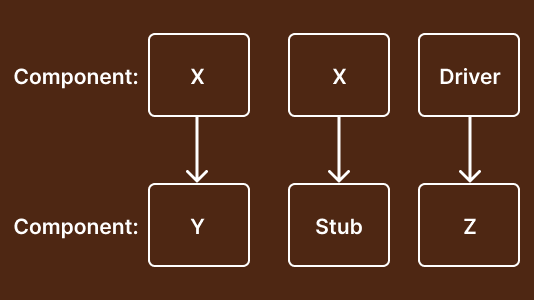
A developer who developed Component Y wants it tested. However, some of Component Y's functionalities depend on Component X and Component Z. The functionality flow is X- > Y- > Z. A calling function is referred to as a driver, while the called function is referred to as a stub.
The remaining elements, X and Z, have not yet been created. As a result, until you construct the two components, we use stub and driver in place of component X and component Z to test component Y. The functionality flow is X- > Y- > Z. A calling function is referred to as a Driver, while the called function is referred to as a Stub.
The following seven stages refer to completing the Component testing process:
Also, explore our comprehensive guide on test execution engines, gaining insights into their functionalities to elevate your testing workflow with automation.
The flowchart below will help you understand the different phases of Component testing.
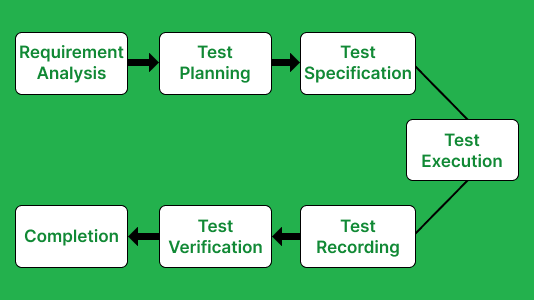
You can create Component test cases from work products, such as software designs or data models. Each tested component uses a series of test cases, each examining a particular input/output pair or partial capability.
Let's look at two web pages: login and homepage. Both pages have a connection in terms of functionality.
Below are the website component test cases of both pages (login and home page).
Test Case 1:
Test Case 2:
Both integration and Component testing use stubs and drivers. Let’s understand what stubs and drivers are.
Engineers now construct module-specific or product-specific test drivers and stubs based on provided needs and design standards using ad-hoc methods. The Component testing method's primary challenge is that the test drivers and stubs it generates only apply to a single project (or product). The old process adds to the expense of creating component test drivers and stubs.
According to the component engineering paradigm, components can have the ability to be customized by engineers to meet specific needs.
However, the conventional method of building component test drivers and stubs is exceptionally costly and ineffective in dealing with various software components and their customized functionalities. Therefore, we need more systematic approaches to building test drivers and stubs for multiple parts and modifications. The main challenge here is to provide a component's manageable, reusable, and configurable test drivers and stubs.
Drivers for testing components must be script-based applications that solely use their black-box capabilities. It consists of two groups. The first group consists of test drivers that conduct certain incoming functions or operations of components; each of these test drivers performs a distinct function. The second group consists of scenario-specific test drivers, each serving a specific set of a component's black-box actions or procedures.
Building component frameworks requires the use of component test stubs. Each test stub replicates a component's black-box behavior or function. Generating test stubs may be done using one of two methods.
Component testing is vital in software testing. Let's break this down using the following aspects:
The testing team performs component or module testing. Removing all potential defects saves money and time in the long run. The following are some significant differences between component testing and unit testing:
| Component Testing | Unit Testing |
|---|---|
| Component testing is carried out by testers at the application level. | Unit testing is performed by the developers at a granular level. |
| Component testing involves evaluating each piece of software separately, whether or not it is isolated from other device objects or components. | Unit testing determines whether a specific program or code is performing as intended. |
| Component testing entails validating application cases and data provided. | Unit testing analyzes against technical specifications. |
| Component testing is a type of black box testing. | Unit testing is a form of white box testing. |
| When performing Component testing, the tester is unaware of the software's internal architecture. | Developers are acquainted with the software's underlying design when doing unit tests. |
| Component testing is carried out only after the entire piece of software has been developed. It is more complex than unit testing. | Unit testing is carried out following each development stage. |
As a result, Component testing is essential for identifying flaws and defects. We recommend that you undertake Component testing before going on to unit testing to ensure that each component of the application functions properly.
In this section of the Component testing tutorial, let’s look into the difference between several testing methods concerning the Component testing method.
After integrating and testing each component, you can perform system testing to evaluate the entire software application or system.
The most accurate and effective technique to gauge how well a module or software component will perform at any level of development is through Component testing.
As technology evolves, you will see a sudden shift in how organizations operate. Traditionally, a dedicated team of testers would create manual test cases and scenarios and record their testing observations in Excel sheets. Therefore, you must spend a lot of time configuring your testing and infrastructure requirements.
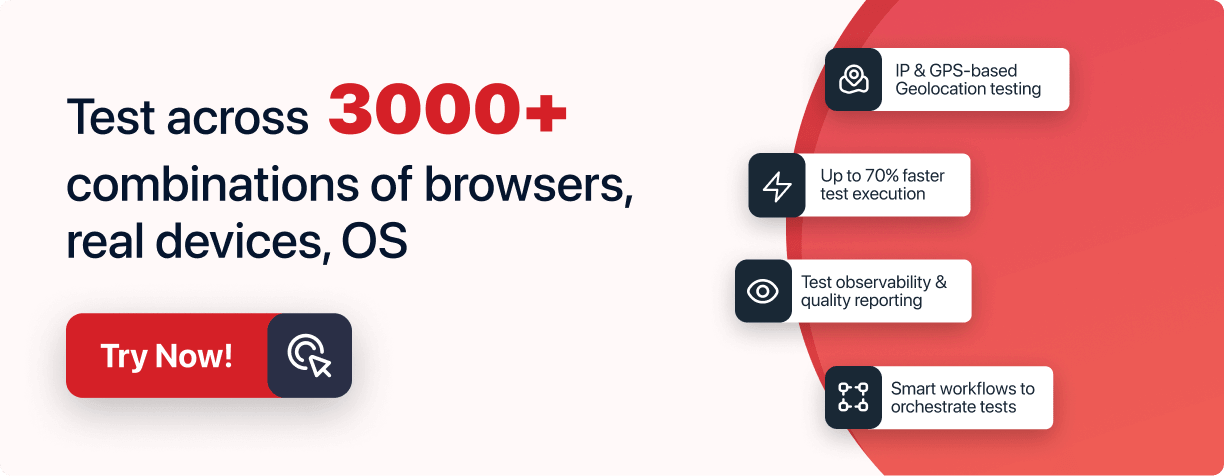
This is where cloud testing platforms like LambdaTest solve your testing needs. It allows you to test your websites and web applications on an online browser farm of over 3000+ desktop and mobile browsers online.
The following are some of the features of LambdaTest’s platform:
Let’s see how to perform real-time Component testing on the LambdaTest platform.
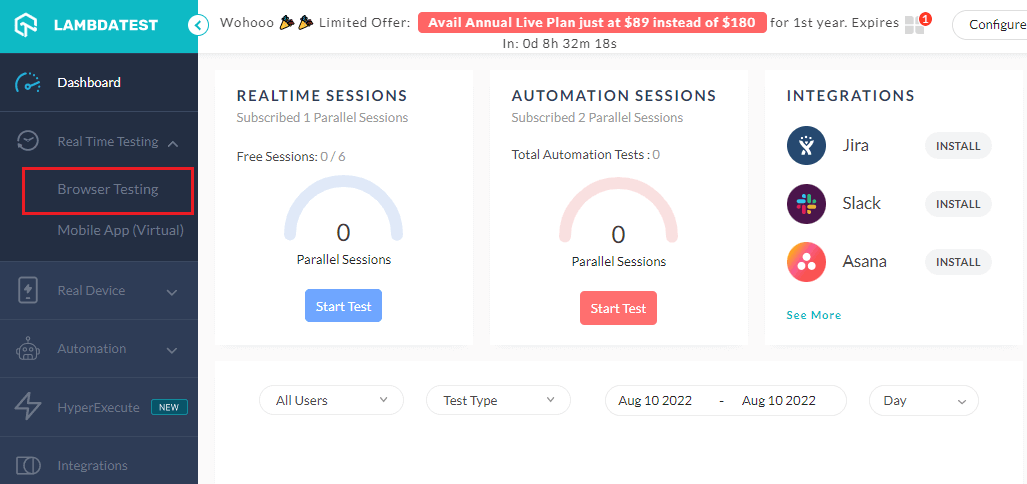
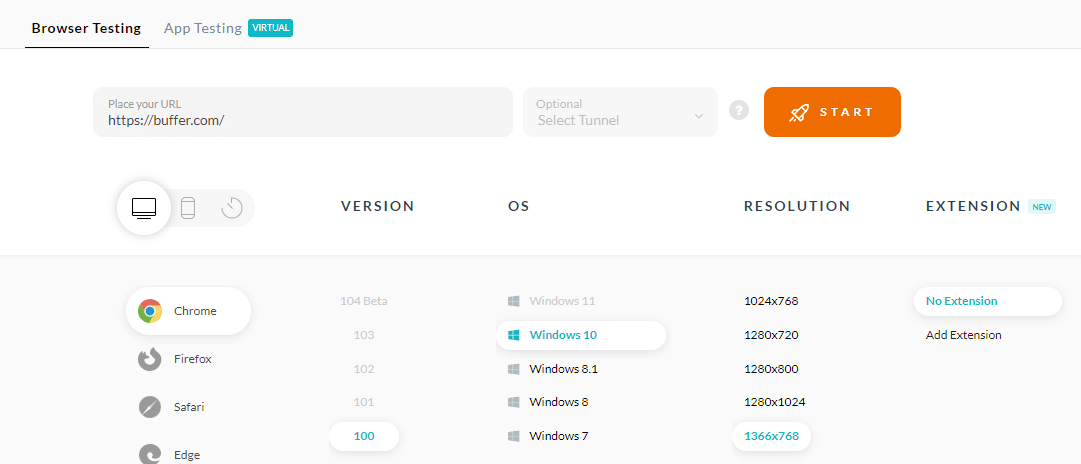
It will route you to a cloud-based virtual machine running a real operating system. Here you can perform real-time Component testing of your websites or web applications.
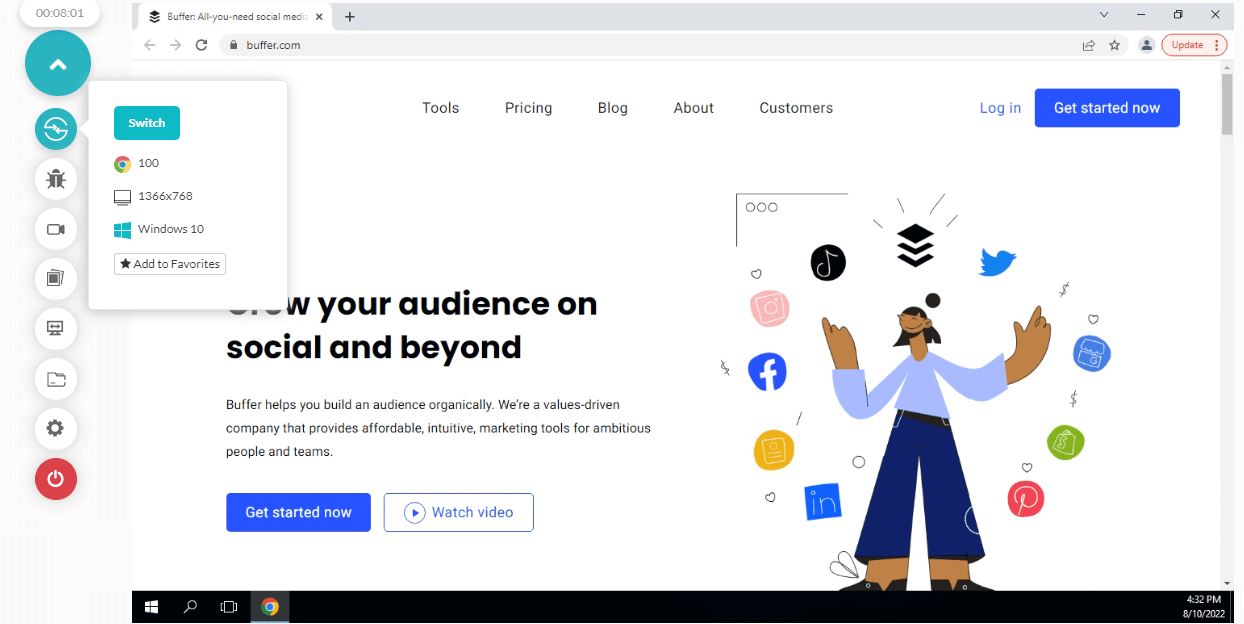
Look at the video tutorial below to learn how to perform real-time testing on the LambdaTest platform.
Subscribe to LambdaTest YouTube Channel, and check out the latest tutorials around Selenium automation testing, Cypress testing, real-time testing, and more.
Component testing validates that each software package operates according to requirements and guidelines. You can find the main issues that make Component testing complex or challenging in the list stated below.

The divergent perspectives of a software component's stakeholders, the supplier, and the user are what distinguishes component-based testing from traditional testing most fundamentally. It reveals the critical distinction between component-based advances and conventional software systems in validation.
Unlike component-based development, which integrates components according to several user profiles depending on their integrating contexts, traditional system development combines all parts exclusively following a single user profile. By getting rid of any preventable bugs, it saves money and unneeded work in later stages.
After finishing unit testing, Component testing is carried out. Integration testing must always come after Component testing since we may find even tiny flaws during integration testing if the former is true.
Component testing guarantees that each piece of software operates according to expectations and specifications. It is imperative in software engineering to identify issues. It would be better if you prefer to perform Component testing before beginning integration testing to ensure that each application part functions properly.
Component testing entails testing each item or component of software independently. It is carried out by the testing team. In contrast, unit testing involves testing individual applications or modules and is performed by the testing team.
Component testing aims to validate the system's input and output behavior, whether each component is usable, and the application's user-friendliness.

Salman works as a Digital Marketing Manager at LambdaTest. With over four years in the software testing domain, he brings a wealth of experience to his role of reviewing blogs, learning hubs, product updates, and documentation write-ups. Holding a Master's degree (M.Tech) in Computer Science, Salman's expertise extends to various areas including web development, software testing (including automation testing and mobile app testing), CSS, and more.

Shahzeb currently holds the position of Senior Product Marketing Manager at LambdaTest and brings a wealth of experience spanning over a decade in Quality Engineering, Security, and E-Learning domains. Over the course of his 3-year tenure at LambdaTest, he actively contributes to the review process of blogs, learning hubs, and product updates. With a Master's degree (M.Tech) in Computer Science and a seasoned expert in the technology domain, he possesses extensive knowledge spanning diverse areas of web development and software testing, including automation testing, DevOps, continuous testing, and beyond.
Try LambdaTest Now !!
Get 100 minutes of automation test minutes FREE!!

Did you find this page helpful?